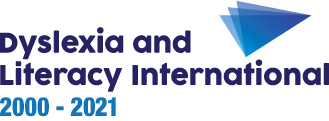Vincent Goetry took a Post-Graduate Certificate in ‘Dyslexia and Literacy’, a distance learning course produced by Dyslexia Action, UK, and validated by the University of York, UK.
Within this course he used the method of teaching reading and writing in the ‘Dyslexia Institute Learning Programme’, written by Jean Walker, Wendy Goldup and Sue Lomas, 2006, The Dyslexia Institute, UK.
Many tools and techniques as well as activities given in this section were inspired by these methods. Our presentation of reading and writing cards was similarly suggested by this work.
We also consulted:
- – Jésus Alegria, Jacqueline Leybaert & Philippe Mousty (1994). ‘Acquisition de la lecture et troubles associés’, in Jacques Grégoire & Bernadette Piérart (Eds.), Evaluer les troubles de la lecture, De Boeck-Wesmael, Belgium
- – Koos Henneman, Ria Kleijnen and Anneke Smits (2004). Protocol Dyslexie Voortgezet Onderwijs – Deel 1 : Achtergronden, beleid en implementatie. (Protocol for dealing with dyslexia in schools: background, help and implementation) KPC Groep, ‘s-Hertogenbosch, The Netherlands
- – Bevé Hornsby (1997). Overcoming dyslexia. A straight-forward guide for families and teachers, Vermilion/Ebury Press, UK
- – National Institute of Child Health and Human Development. (2000). Report of the National Reading Panel. Teaching children to read: An evidence-based assessment of the scientific research literature on reading and its implications for reading instruction (NIH Publication No. 00-4769). Washington, DC: U.S. Government Printing Office
- – Sally Shaywitz (2003), Overcoming Dyslexia: A New and Complete Science-Based Program for Reading Problems at Any Level, New York: Knopf/Random House, USA
- – Janet Townend & Martin Turner (2000), Dyslexia in practice: A guide for teachers, Kluwer Academic/Plenum Publishers, USA, especially chapters 5 (Janet Walker, Teaching basic reading and spelling), 9 (Mary Flecker & Jennifer Cogan, The learning skills), and 13 (Wendy Goldup & Christine Ostler, The dyslexic child at school and at home). The list of questions given for Activity 23 is taken from this last chapter (p. 325)
- – Marion Walker (2000), A resource pack for tutors of students with specific learning difficulties. For more information about this tool consult the website Marion Walker.
The numerous pieces of advice about handling children with dyslexia in this section were taken from a list of recommendations from teachers and associations compiled by Susan van Alsenoy in a document called Check-list for teachers who are in a prime position to help ‘People who Learn Differently’ (2004). To obtain the complete list (about 200 suggestions in all) or lists grouped in themes by Ruth Newbury consult this site.
We cited Rick Lavoie, USA, a specialist in dyslexia. Go here for more.
We consulted a document drawn up by Louise Brazeau called La dyslexie, available on the web site of the Centre Canadien de la Dyslexie.
The short video clips are from the BBC film Language Shock, freely available on
our website.
‘Teaching Today’ published by BBC Education was used for the part on writing and posture.
The icons illustrating the sense modalities were taken from this site.
The part about learning styles is based on the article written by Dr Gavin Reid in Learning Styles – Background to the development of assessment criteria, for a CD-ROM called The Mystery of the Lost Letters – an adventure with Tintin and Snowy on the road to success which we published in 2000.
We also cited a talk given by Dr Harry Chasty in the conference ‘Action for dyslexia’ held in the European Parliament in Brussels in 1994.


